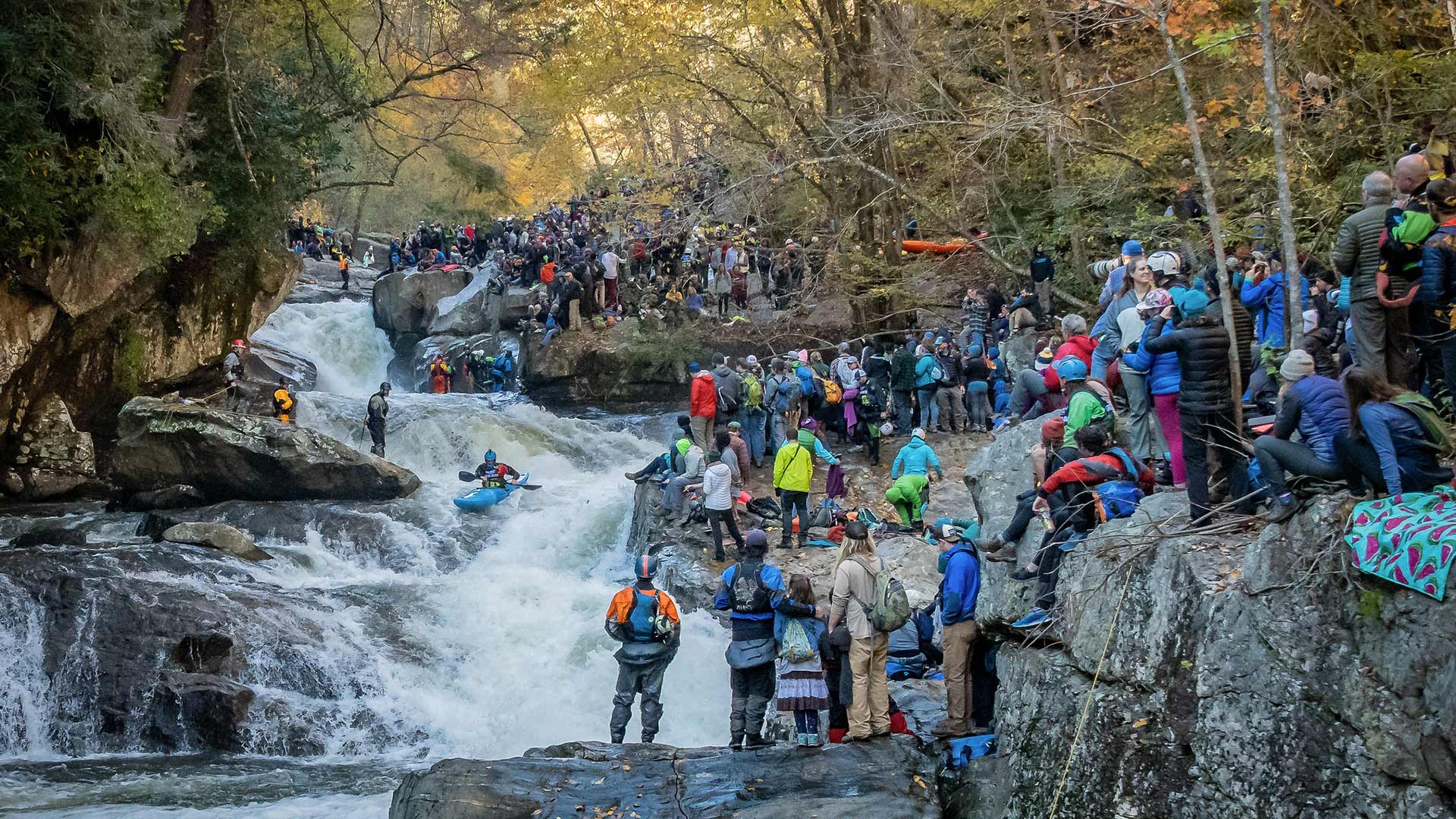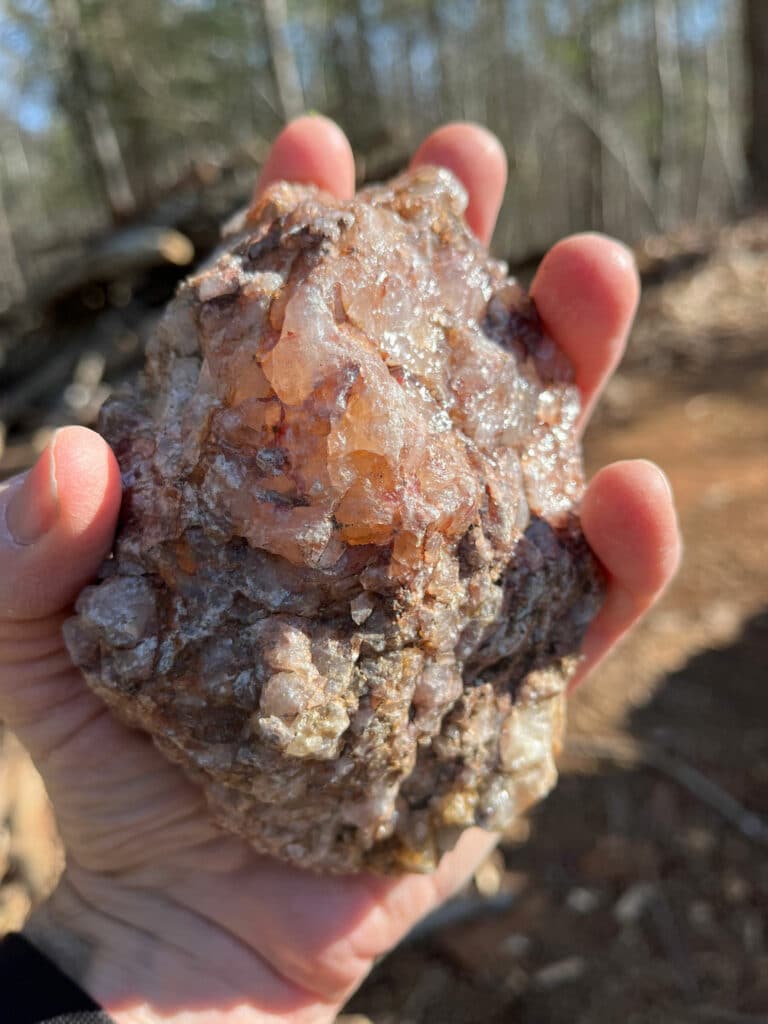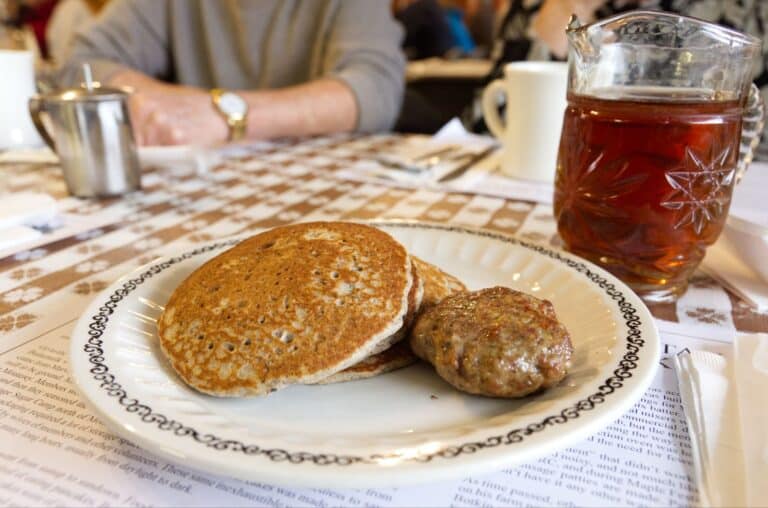“Give up?” the woman asked as I headed back to my truck after walking past her a few minutes earlier. I was parked aside Green River Cove Road in Saluda, North Carolina for the Green Race, the well-known kayak race on a section of whitewater called the Green River Narrows. The Narrows include the “Gorilla”, a Class V rapid that is the centerpiece of the 23 year-old race.
I’d walked up to the trailhead, heard that the two-mile hike-in to the race was four miles, and doubled back to see if I could find a water bottle (unlikely) or an old Clif Bar (possible). I found instead three lacrosse balls, Downy wrinkle remover, a tarp, and a dog blanket. I turned back around.
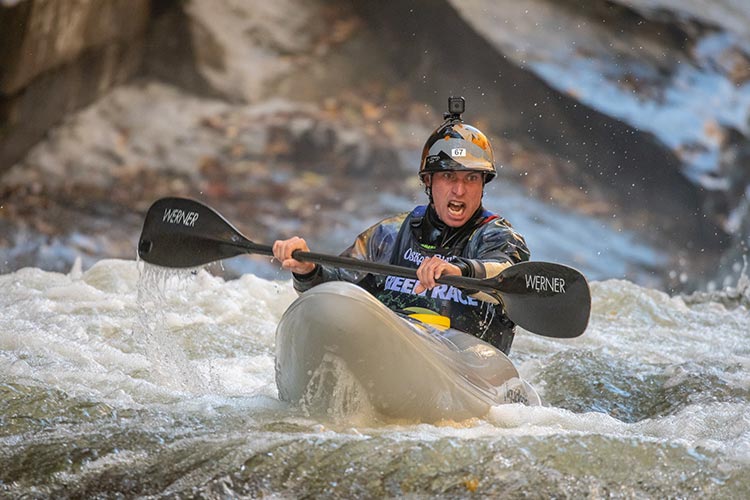
“Need a map?” asked the woman joined now by someone else, her daughter perhaps, who also was interested in the passing stranger and had pulled up a camping chair next to her.
“Sure, I’ll take a map. Thanks.” She hands me a black and white copy of a map with a pink highlight indicating the route to the race.
“You up for this? It’s four miles in there. Then you have to come out,” said her daughter. “I went in there the other day and I ended up all over the place.” She shows me another map that highlighted her own recent hike. I was impressed by how well she documented what, to appearances, looked like a wayward drift into delirium.
“I’m in better shape than I look,” I said.
“You look alright,” she said. The flatness to ‘alright’ suggested that I’d cut bait two miles in.
With that, I hiked in, and ultimately joined 1,000 others to watch the Green Race some four and a half miles into the woods. The last part of the trail to get down to the race is an interesting thing. Along with a throng of spectators you snake down a steep hillside grasping rocks, roots and a rope line. By rock climbing standards a modest descent, by spectating standards, a good effort.
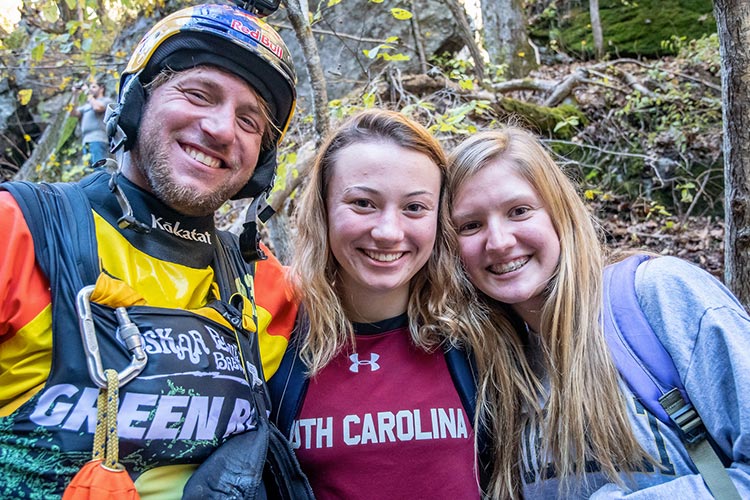
At the bottom, there’s immediate payoff. Spectators line the right side of the river and the racing kayaks break up a backdrop of autumn browns and yellows with an abrupt flash of pink or a blue as they plummet through the whitewater. The crowd whoops and hollers and the echo merges and lifts up and out of the gorge as a single roar that temporarily supplants the roar of the river.
I drift up the sometimes slippery rocks on the river’s right side, ascending a slow half-mile upward to the heart of the race. En route, I step to the side as a stretcher takes out an injured spectator who to appearances is unconscious.
Once on a rock perch, I take in the race. It’s my first visit to the Green Race, and to get a better feel for it I talk with a few nearby racers who have completed their afternoon’s runs.
“It’s about my 15th time. I come back every year because not only is this one of the best deep creeks in the whole world, but it’s an amazing group of talented, top-notch whitewater paddlers,” said Clay Wright, 50, of Rock Island, Tennessee. “We race together and then we hang out together in just an amazing scene.”
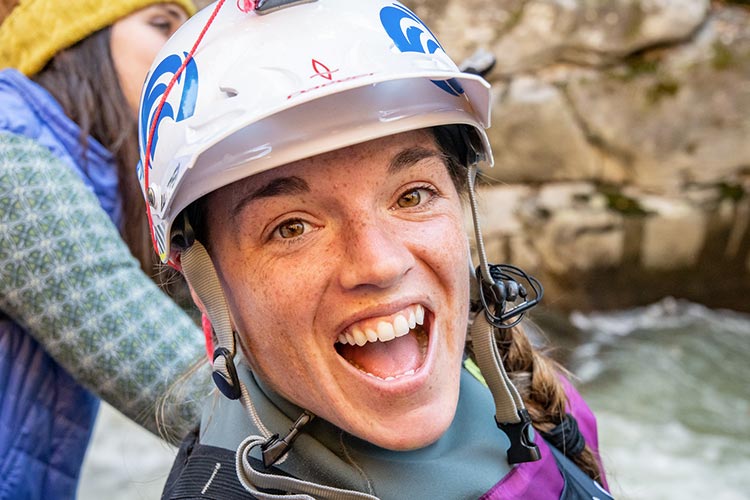
When prompted as to whether anything stands out about this year’s event, Wright doesn’t hesitate. “I feel like the average age of the race just dropped 10 or 20 years this year. It’s the most amazing thing,” he says with a broad smile. “There are a lot of racers under 20, and there are a lot of racers under 18 and it’s awesome to see the next generation stepping up and riding the lightning.”
To his right is Heidi Walsh, who is visiting the States from her native England and participated in the race for the first time.
“I’m on an exchange with the University of Colorado. So I’ve come to America and instead of going to University, I’ve just gone kayaking,” said Walsh, 20. In her travels she’s fallen in with a group of fellow kayakers who encouraged her to attend the race.
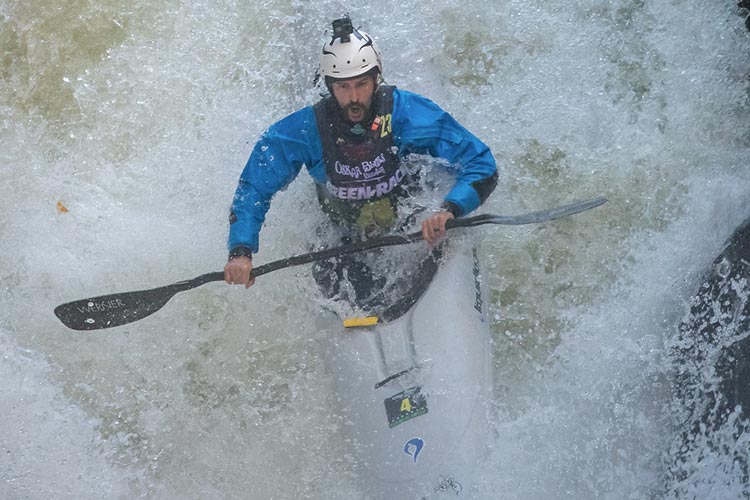
“They were like ‘Why don’t you come? The Green Race is huge.’ I naturally assumed they meant ‘Why don’t you race?’ not ‘Why don’t you watch?’ so I bought a bib,” said Walsh. “The next thing you know they were like, ‘Oh no, we meant sit on the side and watch.’ So I had to train up and I don’t regret it at all.”
Walsh sports the remnants of a fresh scrape on her upper lip. “For me personally, I’ve had a rough time training. I didn’t always have good lines and today the top section was my best run that I’ve done so far here,” she said. “I’m really pleased that when I feel sick with nerves and I’m really scared, I know that I can still bring it.”
The Green Race is held annually on the first weekend of November. For the full 2018 results, click here.
